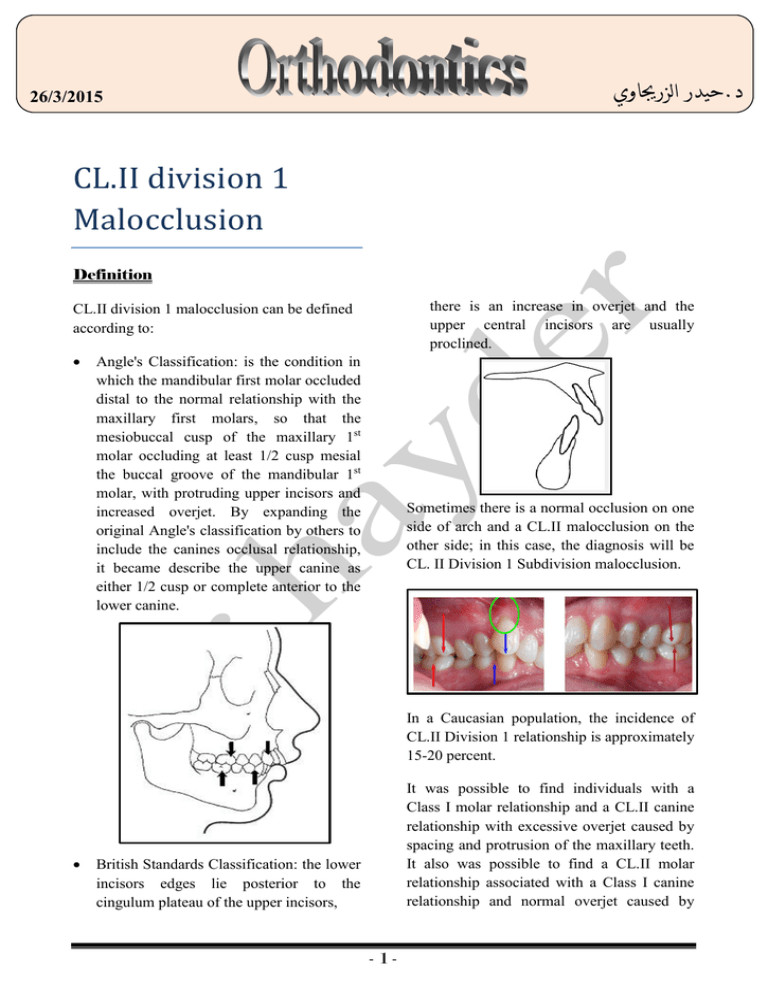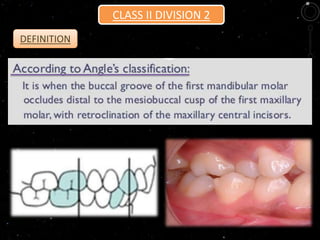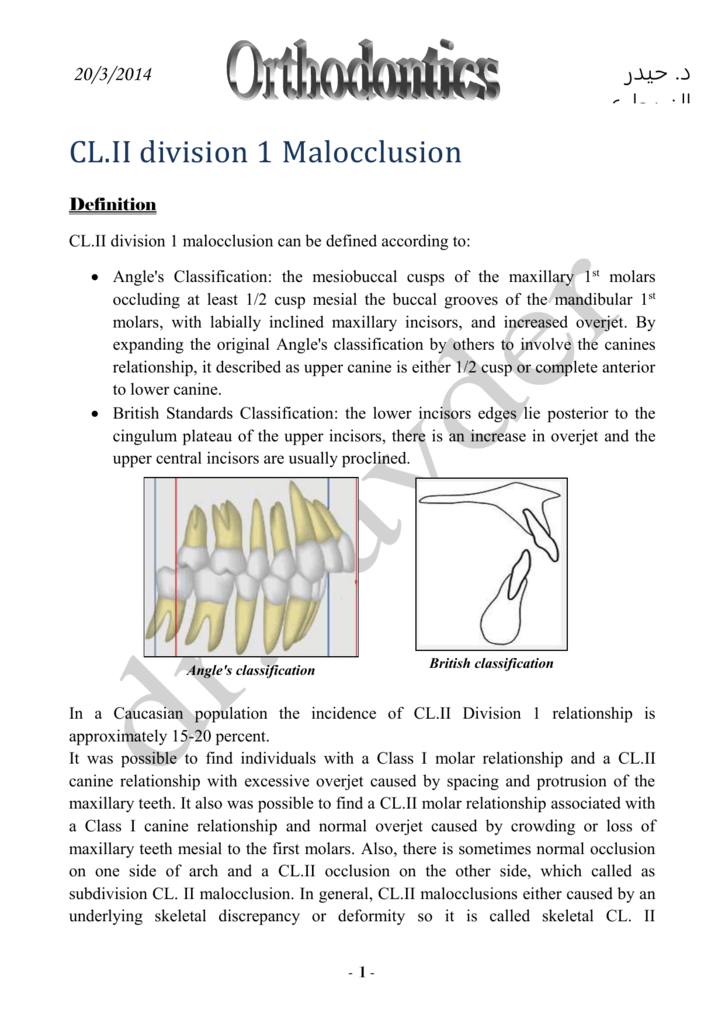class ii malocclusion definition
The embrasure between the lower canine and the lower first premolar is shifted backward with regard to the upper canine blue arrows. Class II Division 1.
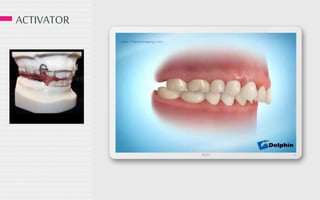
Definition Etiology And Treatment Of Class Ii Malocclusion
Malocclusion is a problem in the way the upper and lower teeth fit together in biting or chewing.
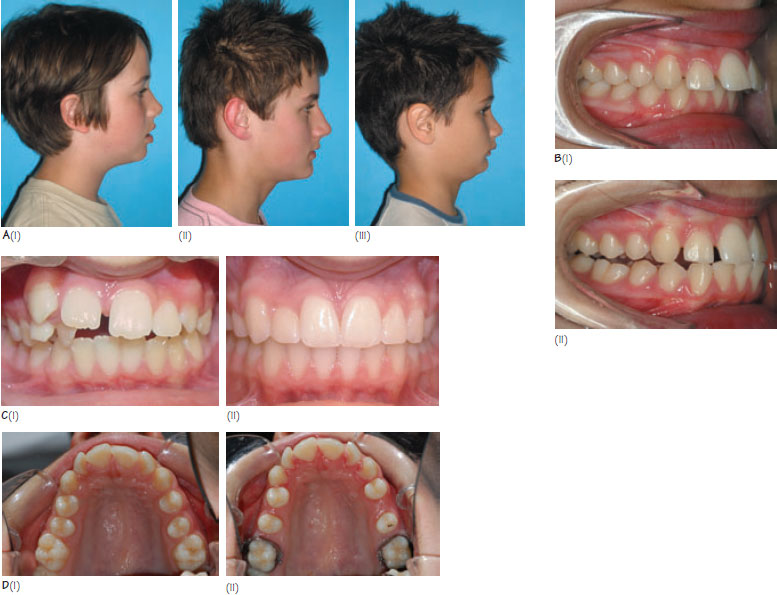
. 12 A recent study elaborated the definition as class II division 2a for the retroclination of the upper. The upper teeth and jaw overlap the lower jaw and teeth severely and the upper molars are very much anterior to the lower molars. In respect to this what is a Class I occlusion.
Class 2 Malocclusion Distocclusion This type of malocclusion is also known as retrognathism or overbite. A distal placement of the mandibular molar a mesial relationship of the maxillary or a combination of the two. Hypodivergent Skeletal Pattern A skeletal pattern in which the skeletal planes are more parallel to each other.
The largest category was mandibular asymmetry. 1 Class II malocclusion may also involve craniofacial discrepancies which can be adjusted when patients are adolescent. The usual treatment options in growing patients.
It is when the buccal groove of the first mandibular molar occludes distal to the mesiobuccal cusp of the first maxillary molar with retroclination of the. The center of the lower first molar mesiobuccal groove is posterior to the first corner mesiobuccal cusp of. Class II malocclusion.
The word malocclusion literally means bad bite The condition may also be referred to as an irregular bite crossbite or overbite. DENTAL FACTORS Pre-existing crowding is exacerbated because retroclination of upper central incisors. Vertical dimension in class II division 2 malocclusion is typically reduced results in absence of occlusal stop to lower incisors leading to increased overbite.
Class 2 malocclusion called retrognathism or overbite occurs when the upper jaw and teeth severely overlap the bottom jaw and teeth. Class II Malocclusion has 2 subtypes to describe the position of anterior teeth. Read rest of the answer.
Class II division 2 malocclusion It is a type of class II malocclusion defined by Angle in 1899. Malocclusion Angle class II subdivision 710782002 Definition. Interesting trends were noted with regard to treatment strategies midline and molar corrections and mandibular incisor proclination.
This overbite can be caused by an overly prominent upper jaw or an underdeveloped lower jaw. Types of class 2 malocclusion Class 2 malocclusions can be subdivided into two categories division 1 and division 2. A class 1 malocclusion means that the.
Class II subdivision malocclusions were grouped into 3 main categories. Class 2 In this type of malocclusion your upper teeth and. Teeth are proclaimed and a large overjet is present.
Approximately 50 to 55 of children between the ages of 6 and 17 have some form of Class 1 malocclusion. Class II occlusion occurs when the lower dental arch is posterior more towards the back of the mouth than the upper one. The molar relationships are like that of Class II and the maxillary anterior teeth are protruded.
A malocclusion is a misalignment or incorrect relation between the teeth of the two dental arches when they approach each other as the jaws close. Class II. Class 1 malocclusion is the most common classification of malocclusion.
What does malocclusion angle class ii mean. In this malocclusion the upper front and maxillary teeth project more forward than the lower teeth and the jaw. A class II intermaxillary dental relationship represents a posterior discrepancy of the lower teeth with regard to the upper teeth.
Description Malocclusion may be seen as crooked crowded or protruding teeth. Class II malocclusion is considered the most frequent problem presenting in the orthodontic practice affecting 37 of school children in Europe and occurring in 33 of all orthodontic patients in the USA. Information and translations of malocclusion angle class ii in the most comprehensive dictionary definitions resource on the web.
Class 1 dental malocclusion is the most common type of malocclusion. The intraoral evaluation Figs 1 2 2 revealed Class II Division 1 malocclusion severe overbite mandibular incisors touching the palatal mucosa severe overjet of 105 mm accentuated curve of Spee and coinciding upper and lower midlines. Class 3 malocclusion called prognathism or underbite occurs when the lower jaw protrudes or juts forward causing the lower jaw and teeth to overlap the upper jaw and teeth.
The mesiobuccal cusp of the maxillary first molar occludes mesial to the buccal groove of the mandibular first molar usually near the embrasure between the mandibular molar and second. The profile of a patient with class II has a convex appearance with a retracted chin and lower lip. Meaning of malocclusion angle class ii.
Dental malocclusions are classified based on the positioning of the upper and lower molars. This type of malocclusion is often severe enough that orthodontic intervention is recommended. A deep bite also known as a Type II Malocclusion is a condition in which the upper teeth overlap the lower teeth which can result in hard and soft tissue trauma in addition to an effect on appearance.
It represents 5 to 10 of all malocclusions Sassouni 1971 3. A Class II malocclusion is when the upper teeth stick out over the lower teeth and affect the overall bite alignment also known as an overbite. Definition of a class 1 malocclusion.
Characterized by a low mandibular plane angle short lower facial height and is often associated with Class II Division 2 malocclusions. In this class of malocclusion either the front teeth are protruded or the back teeth overlap the central teeth. Describe the class ii occlusion.
Class 2 or class II malocclusions are characterized by upper molars that are too far forward compared to the lower molars. It has been found to occur in 1520 of the US population. A malocclusion where the molar relationship shows the buccal groove of the mandibular first molar distally positioned when in occlusion with the mesiobuccal cusp of the maxillary first molar.
While it may take a little more time to shape the bite to a more natural state it is still possible to do. Normal occlusion occurs when the mesiobuccal cusp of the upper first molar is received in the buccal groove of the lower first molar angle class i occlusion. Class II division 2 According to Angles classification.

Classification Of Orthodontic Malocclusion Ppt Download
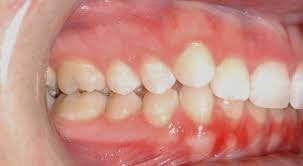
Class Ii Malocclusion Distoocclusion Definition Of Class Ii Malocclusion Distoocclusion

Treatment Of Class Ii Malocclusions

Types Of Malocclusion And Correction Winchester Dental

Angle S Classification For Malocclusions Dentalnotebook

Types Of Malocclusion And Correction Winchester Dental
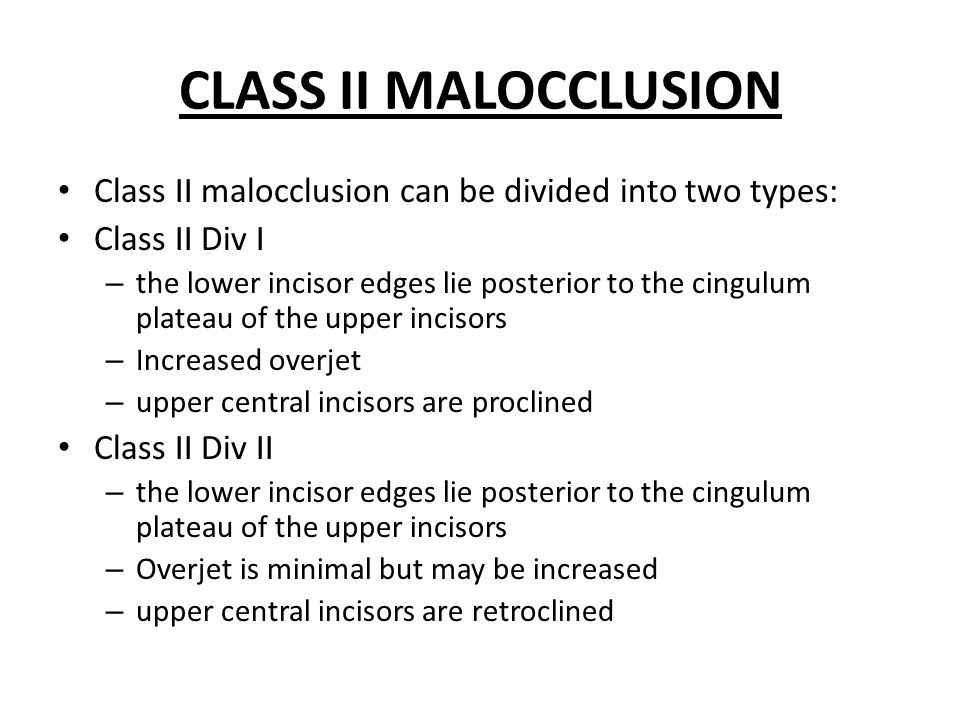
The Aetiology Of Class Ii Malocclusion Ppt Video Online Download

Surgical Orthodontic Treatment In A Class Ii Malocclusion Patient Case Report Revista Mexicana De Ortodoncia
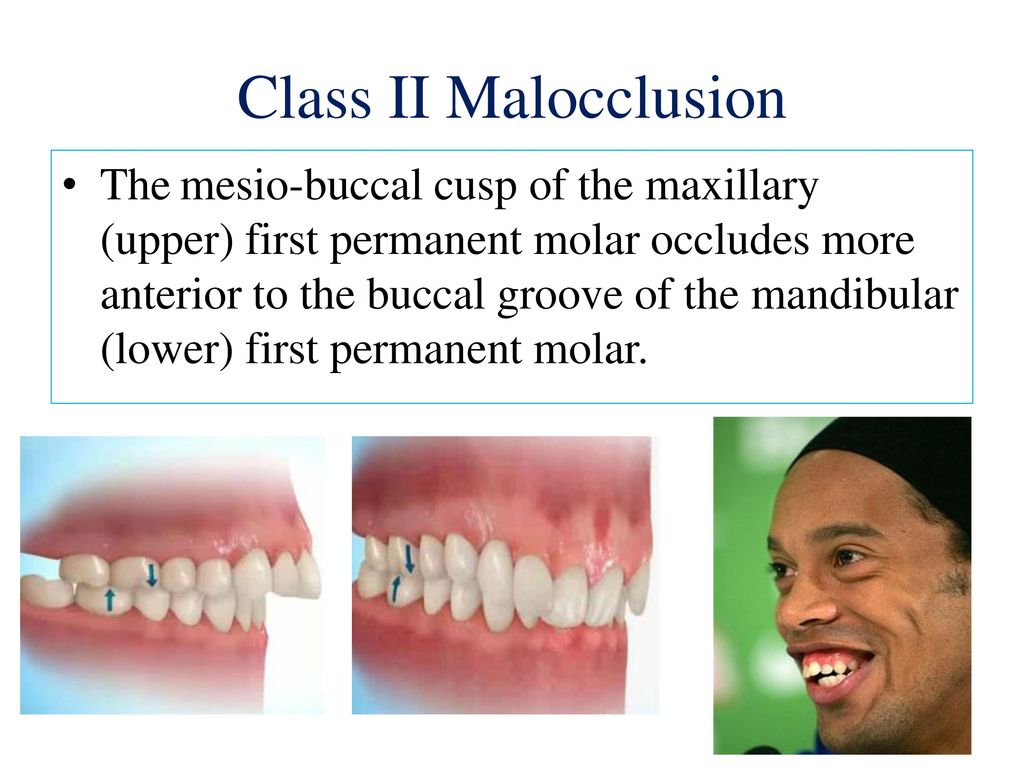
Classification Of Orthodontic Malocclusion Ppt Download

Dx And Rx Of Class Ii Malocclusion 4 9 Flashcards Quizlet

22 Class Ii Division 1 Malocclusion Pocket Dentistry

Advances In Management Of Class Ii Malocclusions Intechopen

References In Orthodontic Surgical Treatment For A Patient With Class Ii Malocclusion And Inadequate Maxillary Incisor Inclination American Journal Of Orthodontics And Dentofacial Orthopedics

What Is A Class 2 Malocclusion Dental Information
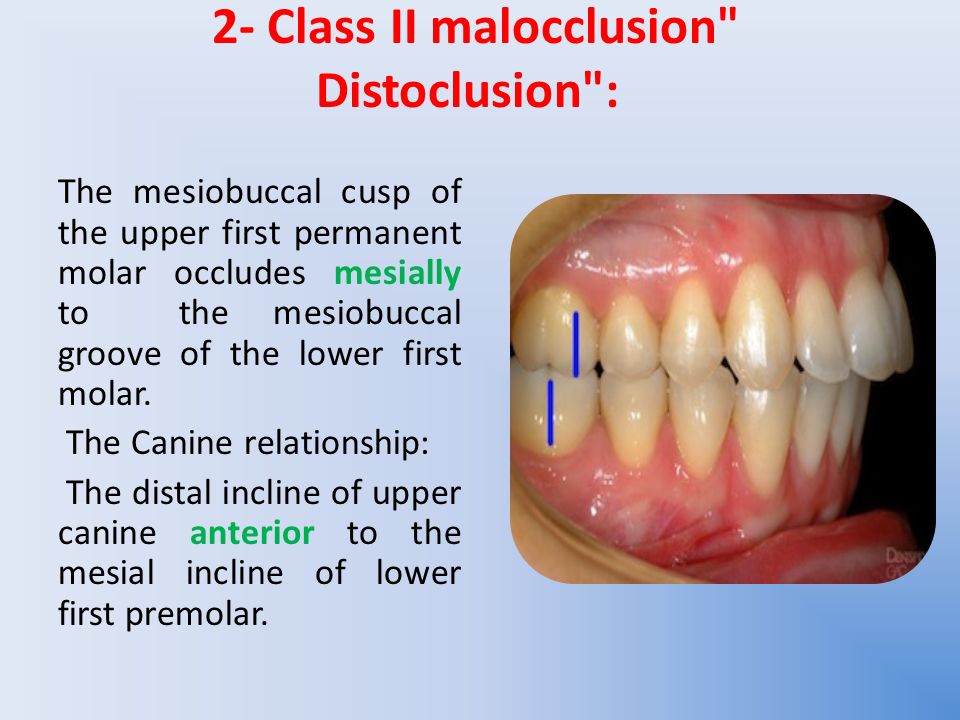
Orthodontic Dr Enas Talb 4th Class Ppt Video Online Download

Angle Class Ii Molar Relationship For The Malocclusion To Satisfy The Download Scientific Diagram
